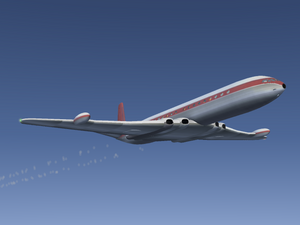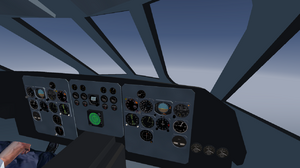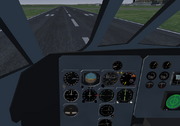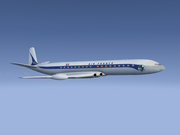De Havilland DH.106 Comet
Jump to navigation
Jump to search
 | |
|---|---|
 | |
 View of the cockpit | |
| Type | Airliner, Historical aircraft |
| Configuration | Low wing aircraft, Monoplane aircraft, Retractable gear aircraft, Tricycle landing gear aircraft |
| Propulsion | Quadjet (Jet aircraft, Four-engine aircraft) |
| Manufacturer | de Havilland |
| Author(s) | Emmanuel Baranger |
| FDM | YASim |
| --aircraft= | dh106 |
| Status | Beta |
| FDM |
|
| Systems |
|
| Cockpit |
|
| Model |
|
| Development | |
| Website |
|
| Download |
|
|
| |
The de Havilland DH.106 "Comet" was the world's first commercial jet airliner. Developed and manufactured by de Havilland at its Hatfield Aerodrome in Hertfordshire, United Kingdom, the Comet 1 prototype first flew in 1949. It featured an aerodynamically clean design with four de Havilland Ghost turbojet engines buried in the wing roots, a pressurised cabin, and large square windows. For the era, it offered a relatively quiet, comfortable passenger cabin and was commercially promising at its debut in 1952[1]. The FGAddon Comet is based on the Comet Model 4.
Specifications (Comet 4)[2]
| Max Take-Off Wt. | 162,000 lbs |
| Max Landing Wt. | |
| Empty Wt. | 75,424 lbs |
| Max payload | 20,286 lbs |
| Maximum Speed | |
| Normal Cruising Speed | 450 kts |
| Vfe (max flaps speed) | |
| Approach Speed | 124 kts |
| Landing Speed | |
| Stall Speed | |
| Service Ceiling | 42,000 feet 13000 m |
| Range | 4,000 nm |
| Landing Distance | |
| Take-off Distance |
Basic procedures
Gallery
| References |

